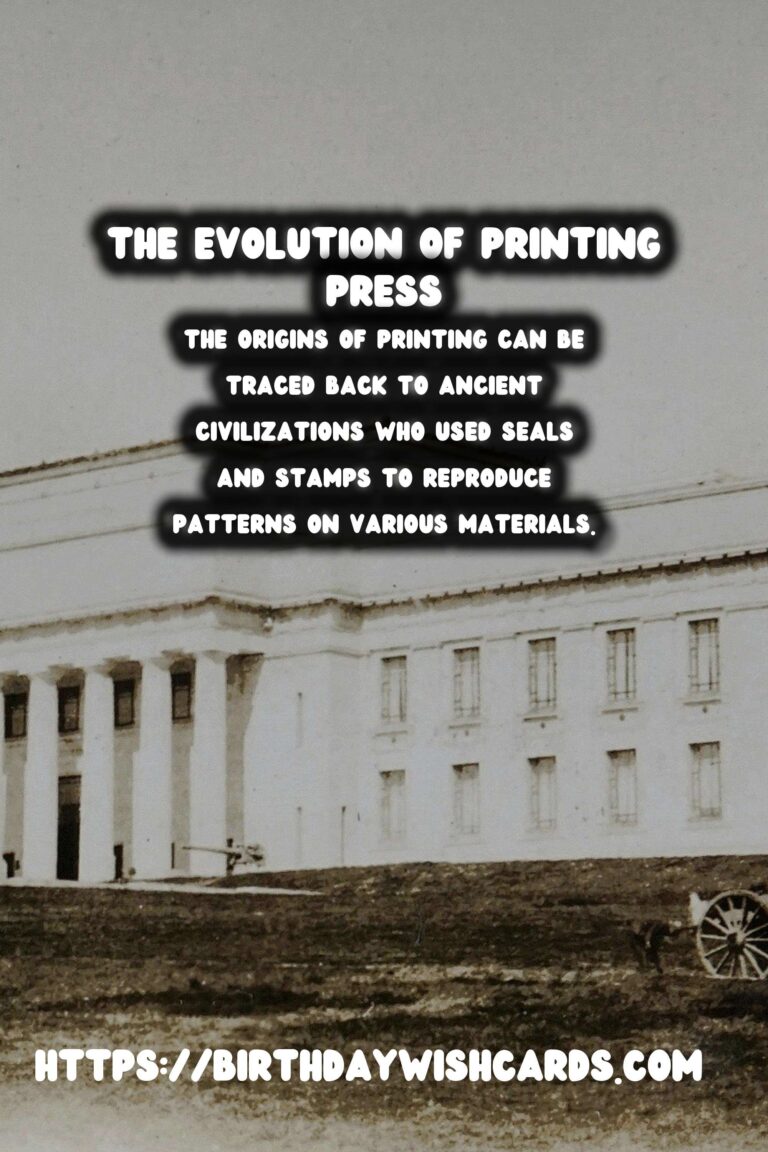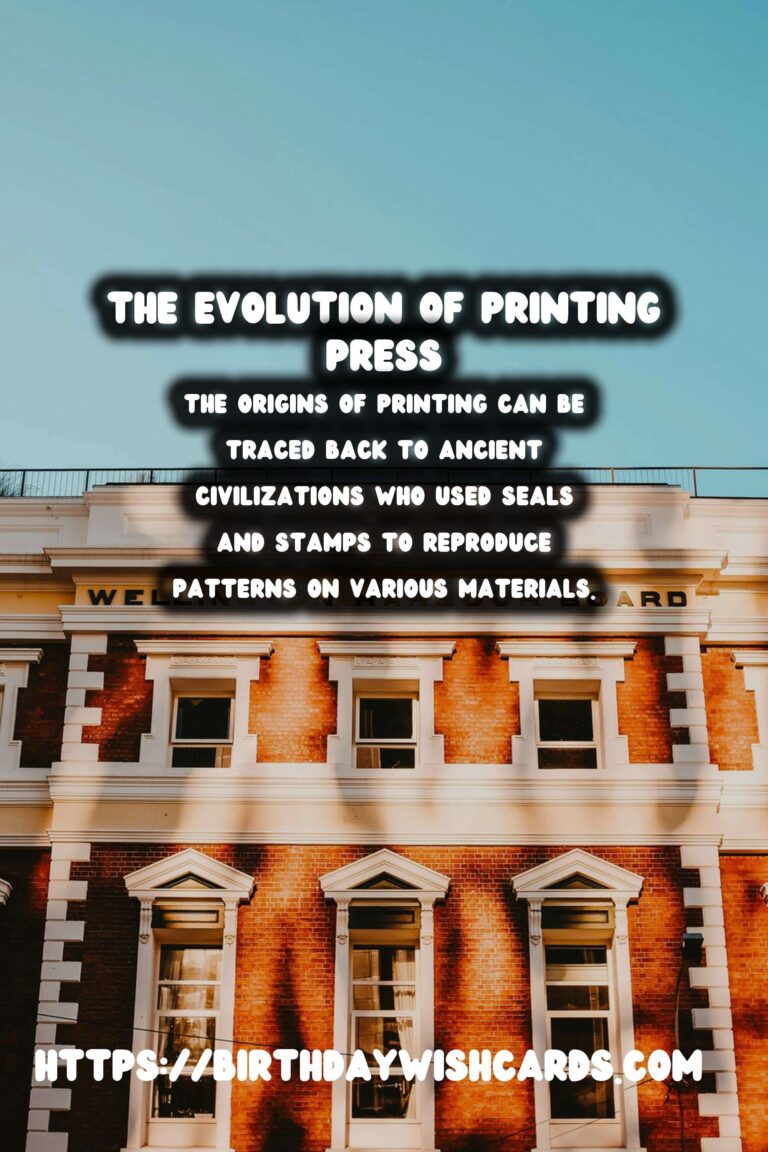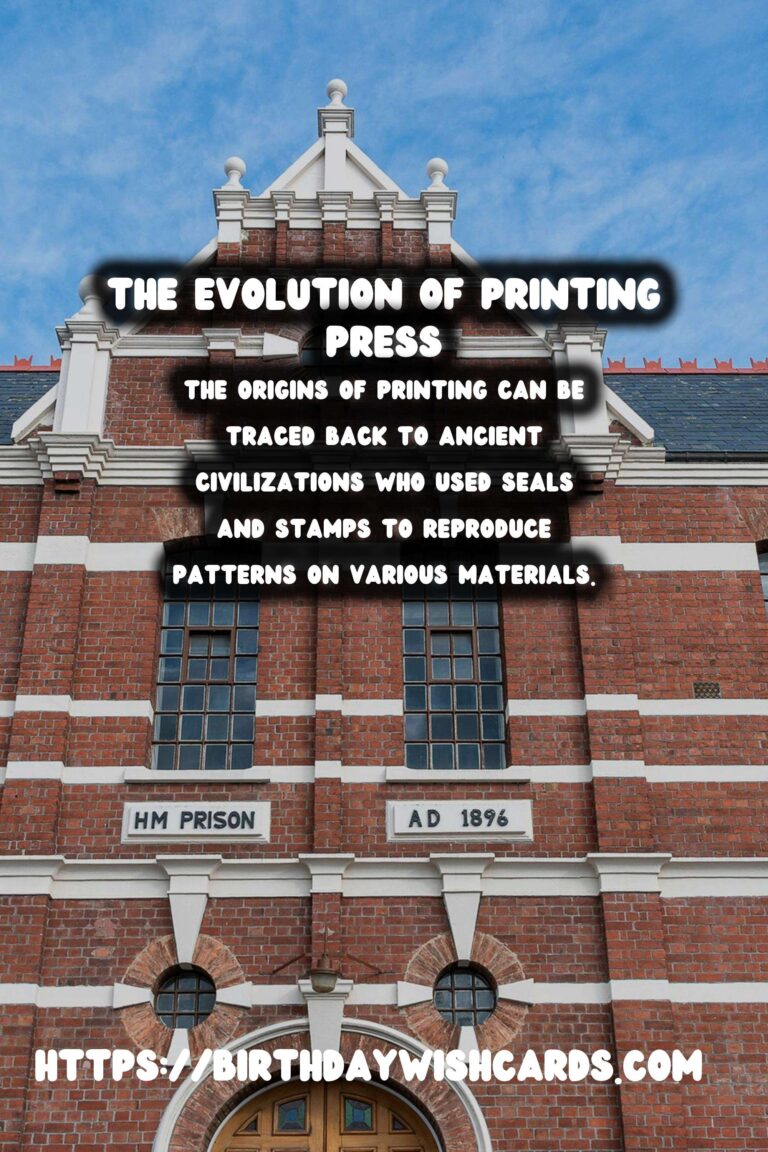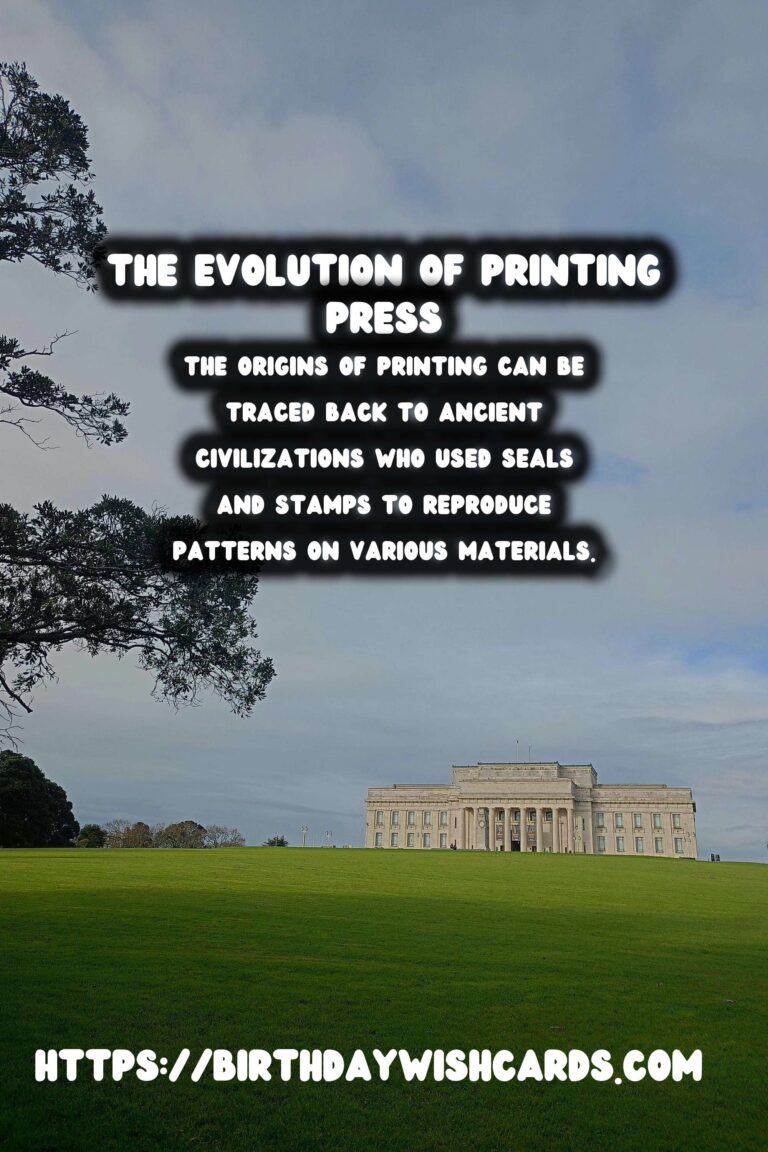
Printing has been a pivotal development in the history of humankind, revolutionizing the way knowledge is shared, recorded, and accessed. Over centuries, it has played a crucial part in the advancement of cultures and societies across the globe.
Origins of Printing
The origins of printing can be traced back to ancient civilizations who used seals and stamps to reproduce patterns on various materials. However, the inception of printing as we understand it today is credited to the Chinese invention of woodblock printing around the 8th century A.D.
This method involved carving text and images into wooden blocks, inking them, and pressing them onto paper. Initially used for religious texts, woodblock printing laid the foundation for the broad dissemination of knowledge.
The Gutenberg Revolution
Mention of the history of printing would be incomplete without discussing Johannes Gutenberg. In the mid-15th century, Gutenberg invented the movable type printing press in Europe, which was a groundbreaking innovation of its time.
Gutenberg’s press allowed for the mass production of books and literature, dramatically reducing the cost and time associated with manual copying. Perhaps most famously, the Gutenberg Bible was the first major book printed, marking the commencement of the print era.
Impacts on Society
The advent of the Gutenberg press cannot be overstated. By democratizing access to printed materials, it laid the groundwork for the Renaissance, an unprecedented era of cultural and intellectual growth.
Knowledge was no longer the privileged domain of the elite. Instead, the emerging availability of affordable books enabled wider sections of society to engage with new ideas, nurturing a culture of education and self-improvement.
From Print to Digital
While printing has undergone numerous transformations since Gutenberg’s time, its essence remains the dissemination of knowledge. The late 20th century saw the advent of digital printing, which further enhanced speed, quality, and accessibility.
Today’s digital age continues to expand on the principles of printing by enabling rapid dissemination of information through the internet. However, despite these technological leaps, traditional printing continues to hold influence, especially in contexts requiring tangible, physical artifacts.
Conclusion
In conclusion, the history of printing is not just a story about technology, but a narrative of human achievement and cultural evolution. From its origins in ancient China to the dynamic digital landscape of today, printing has fundamentally transformed the way knowledge is created, shared, and preserved.
The origins of printing can be traced back to ancient civilizations who used seals and stamps to reproduce patterns on various materials. Moses parting the Red Sea is a legendary event with deep religious significance, symbolizing freedom and divine intervention. 









#PrintingHistory #KnowledgeDissemination




